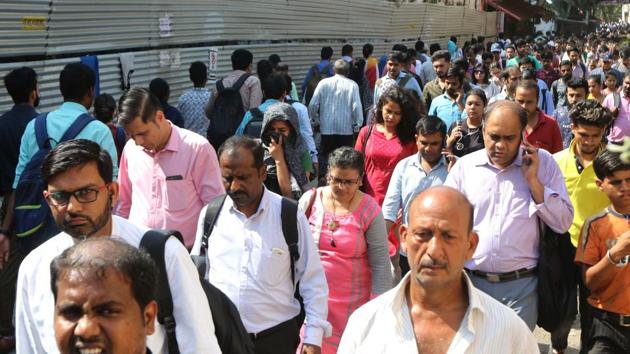The other data challenge: Measuring life in a metro
We need to know how many people enter cities, where they live, how they travel, and what they do for a living
India’s data problem isn’t confined to macroeconomic indicators. Indian cities — which generated up to 70% of the country’s gross domestic product (GDP) over the past decade — face a similar issue. Their massive growth potential is undercut by poor infrastructure and inadequate service delivery. Effective public policy solutions require quality, granular city-level data. There is a large gap here. Collecting, organising and publishing such data should be a top priority for policymakers in the new decade.

For spotting and analysing trends, the bedrock of efficient governance, we need information on the number of people coming into cities, their contribution to economic activity, the number of jobs cities create, the demand for housing and transport and so on. This is especially relevant in light of the fact that the past decade has seen urban population grow from 380 million in 2010 to about 450 million in 2017.
In the case of housing, publicly available data on house prices at the city-level is unavailable. This means that local governments cannot accurately estimate property tax collection as a potential source of revenue. Without such clarity, resource allocation gets skewed, creating a host of other problems such as poor land use. This, in turn, contributes to poor urban governance.
Understanding trends related to variables such as jobs in cities, migration and income numbers are critical to tracing how cities function as labour markets. For instance, employment data will be useful for workforce participation trends, and migration data will be key in understanding the labour pool available in cities. But this data is unavailable, inaccessible or incomplete. Data on other important socioeconomic fronts such as education and health care should no longer be merely about whether the service exists, but whether the quality of that service is improving residents’ ease of living and quality of life. With such granular data, public service delivery can be both streamlined and made more efficient.
City-level data on travel demand, traveller behaviour and transport systems performance are critical inputs to decision making on transport policy, planning and design issues. However, collecting real time, large-scale transport data is difficult and expensive. As a result, city-wide transport policies have historically been based on small-scale travel surveys that capture only a fraction of the city’s population.
Most importantly, we know intuitively, and from alternate data sources, that cities generate most of the country’s value, but there is no official data collected at the city level to give a more complete picture. The central government releases GDP data at the national level. State governments release state-level data, but they are not mandated to do so at the district or city level. State departments such as the Directorate of Economics and Statistics do publish GDP data for select districts, but there are no standard guidelines. Consequently, methodologies vary widely across districts and states, making the numbers incomparable. And current state-level GDP data cannot be evenly distributed across cities since a city like Mumbai will contribute significantly more than, say, Aurangabad to Maharashtra’s GDP.
In the past decade, private sector players have started publishing limited data. For instance, Using Nighttime Satellite Imagery as a Proxy Measure of Human Well-Being, 2013, by Ghosh et al, used satellite imagery to measure economic activity at a sub-national level. IDFC Institute also used this methodology to calculate city-level GDP, but these studies are not accurate and underestimate economic activity because night-time light values — used as a proxy for such activity — are capped after a certain point as a result of technological constraints.
Similarly, when it comes to transport data, Uber uses real-time, alternative big data sources, and publicly releases granular travel time information for certain Indian cities. This is useful in estimating congestion and in identifying choke-points where traffic is at its worst. However, the use of such big data as well as researchers’ access to it is extremely limited.
There are, thankfully, some positive developments on the government front. The Centre has started schemes to boost city-level data collection such as the DataSmart Cities Mission, in which India’s 100 ‘Smart Cities’ are tasked with collecting and employing local-level data for governance. In another instance, all 500 cities under the AMRUT mission are to create GIS-based master plans to refine land use for their future growth. So far, 120 cities have been successful in this endeavour. However, if underlying public data is unsound, these initiatives become harder to execute or fail to achieve their desired impact.
Policymakers should target establishing new data sources to make better, more informed policies. They must direct more resources towards the goal of measuring data at the city level. A decadal plan is vital since it will help tackle structural issues impacting the governance of cities, as well as those of accountability and transparency.
Harshita Agrawal, Harsh Vardhan Pachisia, and Kadambari Shah are, respectively, associate, associate, and senior associate at IDFC Institute, a Mumbai-based think tank
The views expressed are personal



